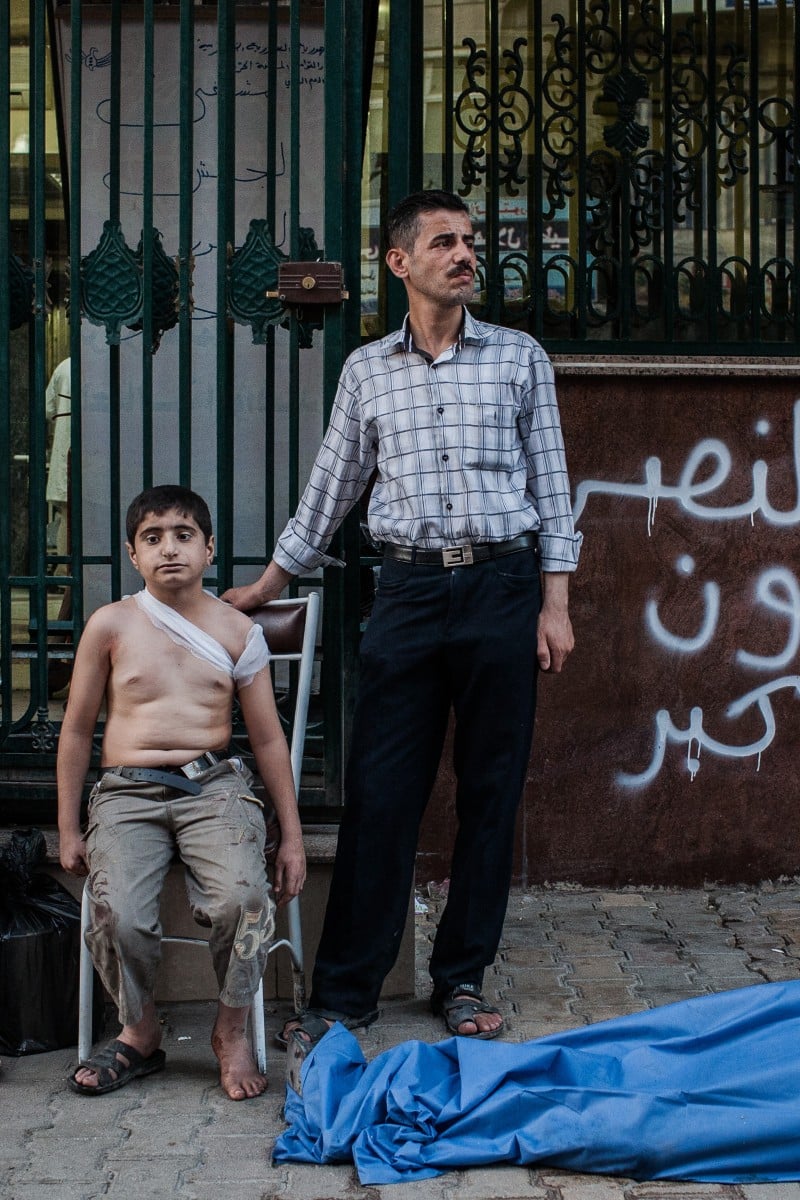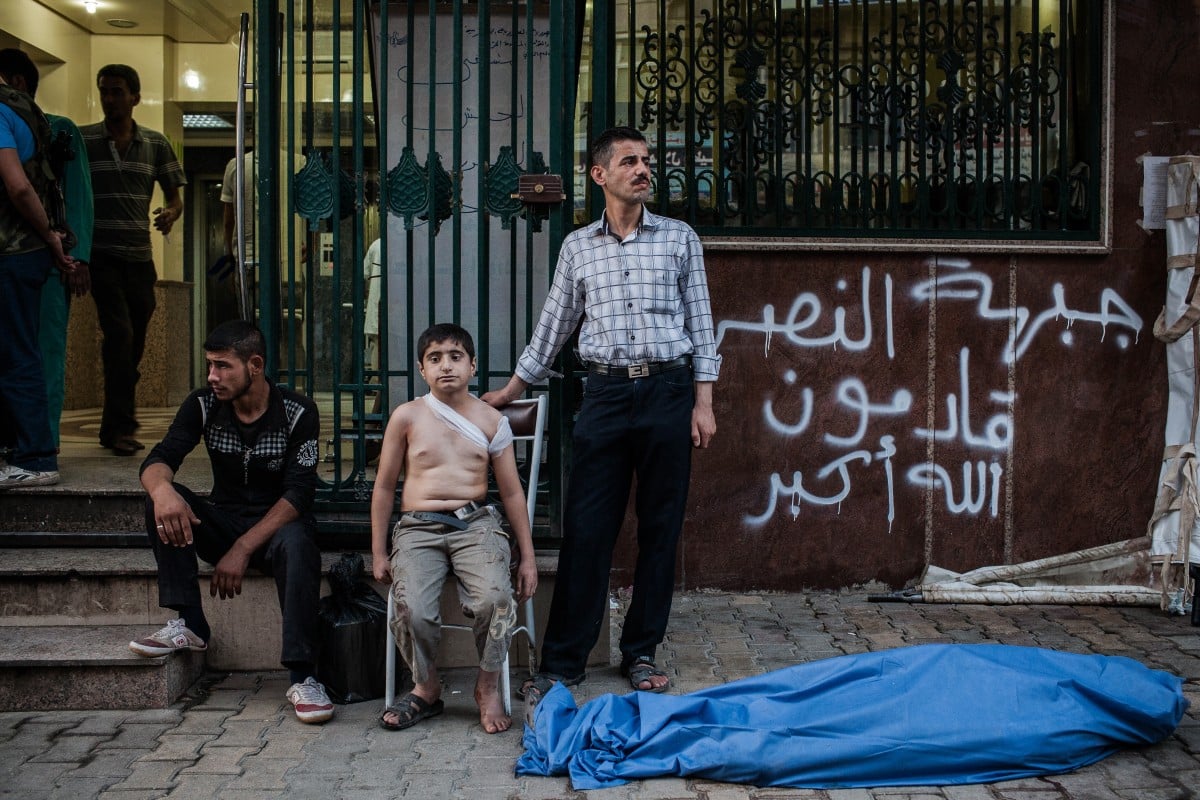
Photojournalist Nicole Tung on what inspires her to cover conflicts such as the Arab Spring, Occupy Central, and Europe's refugee crisis
The award-winning war correspondent recently showed her photos of children affected by war at PMQ, at an exhibition hosted by Save the Children Hong Kong
 Ahmed, 12, waits with his uncle, right, near the body of his father who was killed by a shell in Aleppo, Syria. Ahmed was also injured by shrapnel.
Ahmed, 12, waits with his uncle, right, near the body of his father who was killed by a shell in Aleppo, Syria. Ahmed was also injured by shrapnel.At the centre of the photo was a young boy with a bandaged arm. Beside him lay his father in a blue body bag. The boy looked sad, but he had no tears on his face – perhaps because this isn’t out of the ordinary in Syria, where he lives.
This scene was captured in one of the photographs by award-winning photojournalist Nicole Tung that were displayed at PMQ last Saturday. A collection of her work was showcased in a special exhibition hosted by global charity Save the Children Hong Kong to commemorate its 100th anniversary.
Though Tung was born and raised in Hong Kong, she studied at New York University in the US and graduated in 2009 with majors in journalism and history. She had decided to stay in the US to work as a freelancer, but she eventually grew tired of New York.
In 2011, Tung decided to move to the Middle East to cover the Arab Spring – a series of anti-government protests and uprisings. It was a life-changing choice, and only the first of many.
Since then, Tung has been working as a freelancer for international publications and NGOs, documenting conflicts in Libya, former child soldiers in the Democratic Republic of the Congo (DRC), the refugee crisis in Europe, Occupy Central in Hong Kong.
“What drives me is my purpose there; to document what happens and who it happens to,” she says.
On why she chose to pursue photojournalism, she says: “Pictures tend to stay in people’s minds because it’s a frozen frame that can convey so much emotion.”
This understanding of how best to convey what is going on in a turbulent situation let to Tung being awarded the James Foley Award for Conflict Reporting from the Online News Association last year.
Spending so much time in so many conflict zones has made the 33-year-old more aware than ever of how death is never really that far away, but Tung says she knows that what she does is too important to give up. Though she might worry about her own safety when she is working out in the field, she knows that it’s something the people living in those war zone have to deal with on a daily basis.
“I could just leave if I wanted to,” says the photographer – who is now based in Istanbul, Turkey – whereas for the people she’s photographing, it’s their home.
Tung says that while she’s gained much of her knowledge about the strangers she photographs from working behind the lens, there have been many times when the families she’s followed have invited her to chat with them over dinner. She says she’ll never forget the hospitality she has received.
“Even though they’re living through a difficult time in their lives, they still have a place in their heart to treat me, a foreigner, as one of their own,” says Tung.
As a war photojournalist, Tung says one of the things that really moves her is seeing children and young people being used to fuel the fires of war. In places such as the Congo region in Africa, for example, many start their military training when they are very young.
According to a press release by international children’s charity Unicef on child soldiers, published in February 2018, it is estimated that between 5,000 and 10,000 Congolese children have been associated with the militias just in the region of Kasai alone, a province in the DRC.
“Imagine being 12 or 13 and someone hands you a gun, and tells you ‘Okay, now I’m going to train you to fight and you have to learn how to kill people’,” Tung says.
Even if they manage to escape, and go on to receive rehabilitation services from NGOs, Tung says many child soldiers are tempted back into fighting for militia groups, often because it is the only thing they know how to do.
Tung acknowledges that, for the most part, Hongkongers might not be able to relate to these issues. Still, she says, she hopes her photos will remind everyone to be grateful that they get to live in as a safe an environment as our city.
“Just because we have a peaceful life, it doesn’t mean everybody lives that way, and it can change quickly.”
